Avoiding Injuries while Shoveling Snow in 5 Simple Steps
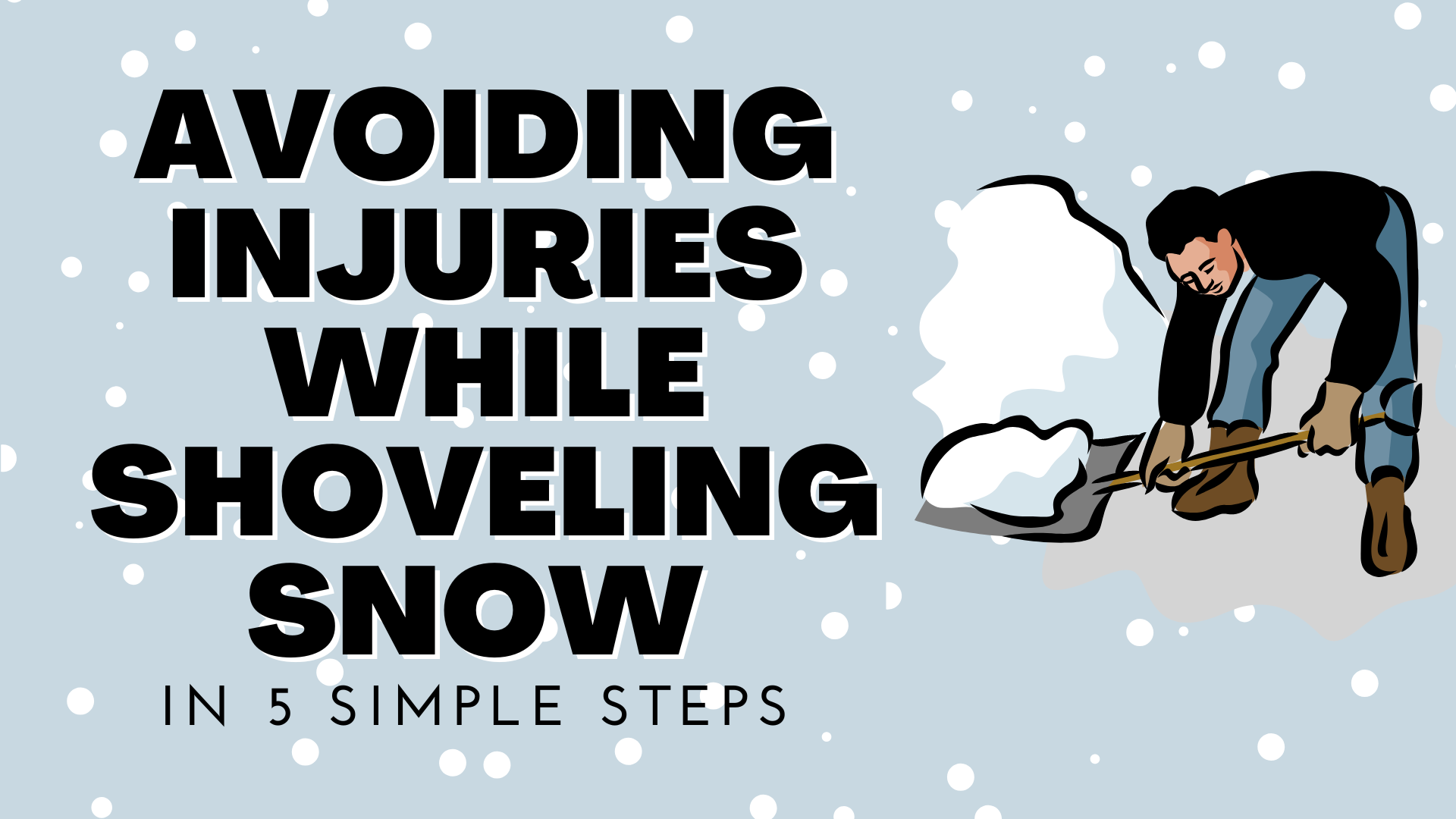
Keep the shovel handle down and ahead of you. This is really about the position of the shovel. If you have the angle too steep it can lead to injuries in your neck, shoulder, low back, and even knees. You want to make sure to take small amounts of snow to move and not overdo it. This also prevents injuries to your knees if you are bent too low for too long. Enjoy the time out in the snow and proper mechanics will make it that much more enjoyable and your body will thank you. Lift with your legs, not your back to avoid common snow shoveling injuries. Keep the weight off your back and use your legs to support the weight instead. Raising your hips and not being bent over for long periods keeps you from straining your back muscles and keeps the snow light enough to move quickly. Use a long-handled shovel. Long-handled shovels help you lift and push the snow without straining your back as often, which is important since you can spend a lot of time in this position without even realizing it. Another benefit of using a long-handled shovel is that you can move the snow into small piles that are easy to dig out later. A small amount of lifting is much better for avoiding snow shoveling injuries. Take small amounts and multiple trips to decrease the potential for injury. You don’t have to be a superhero – just be a smart hero. Take breaks – it’s good for your back and your heart. It is also helpful for avoiding snow-related injuries. When shoveling snow there is a tremendous amount of stress placed on your body. Not just your low back but also your heart. So again, enjoy the process -yes that sounds crazy but you need to take breaks. Get % of it done and then go inside and warm up and get a couple of sips of hot cocoa. Then work on the next 1/2 of the driveway and take another break – maybe throw some snowballs at the kids or neighbors and then finally complete the last % and wrap it up with building a little snowman. HOW TO AVOID SNOW SHOVEL INJURIES Winter is here and with it comes the inevitable task of shoveling snow. While it may seem like a simple task, snow shoveling can lead to a variety of injuries, particularly to the back. In this blog post, we will be discussing how to avoid snow shovel injuries and tips to help prevent common snow shoveling injuries. We will also be covering snow-related injuries and how to prevent back injuries from shoveling snow. By above 5 simple steps, you can stay safe and injury-free while tackling the winter weather. Understanding the Risks of Back Injury from Shoveling Snow Shoveling snow can put a lot of strain on the back, making it one of the most common snow-related injuries. People with pre-existing back conditions, such as herniated discs or arthritis, are at a higher risk for injury. Using improper technique or lifting heavy loads of snow can also contribute to back injury from shoveling. To prevent back injury, it’s important to use the proper technique and to stretch before and after shoveling. Wearing appropriate clothing and footwear, and taking regular breaks to rest and stretch, can also help prevent back injury from shoveling snow. If you experience pain or discomfort while shoveling, stop immediately and seek medical attention if necessary. Remember to be mindful of your physical limitations and to listen to your body, if something feels wrong don’t push yourself too hard. Common Snow Shoveling Injuries and How to Avoid Them Winter is here and with the snow comes the need to shovel it away. While it may seem like a simple task, snow shoveling can lead to a variety of injuries. In this blog post, we will be discussing the most common snow shoveling injuries and tips on how to avoid them. From strains and sprains to slips and falls, we will cover it all. We will also touch on back injuries from shoveling snow and how to prevent it. By following the above 5 simple steps, you can stay safe and injury-free while tackling the winter weather. Remember that it’s important to be mindful of your physical limitations and to listen to your body. If something feels wrong, don’t push yourself too hard. Stay safe and enjoy the winter season.
5 Helpful Tips to Avoid Injuries while Shoveling Snow
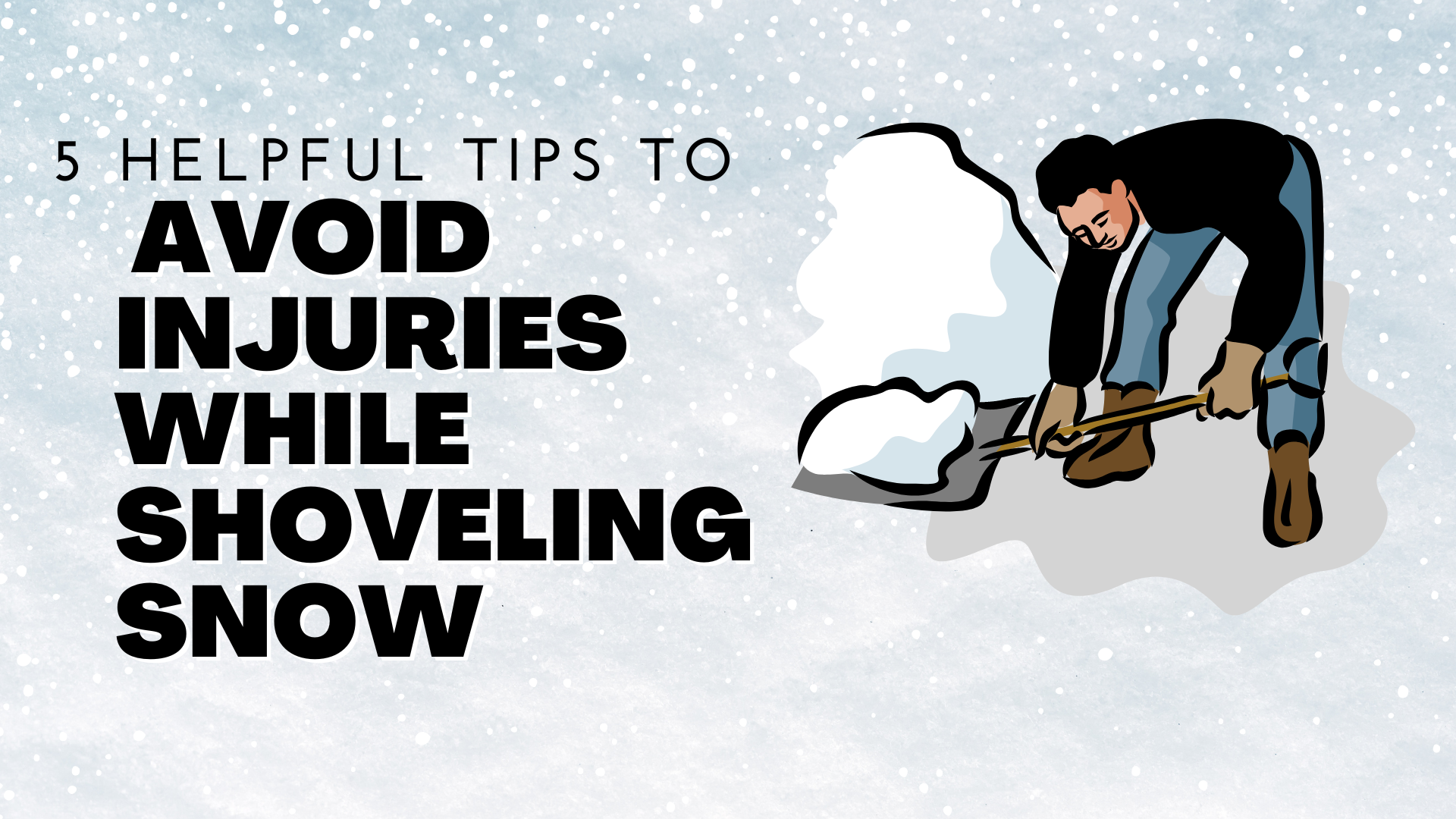
Tis the season for snow and ice! While we typically enjoy the time spent outside in the winter, there are certain risks to take into account during these colder months. Back strain is one of the most common injuries that people face during snow removal. This is because shoveling involves heavy lifting and bending over for long periods. Here are a few tips to help ease the strain on your back if you experience back pain during snow removal: 1. Keep the shovel handle down and ahead of you. This is really about the position of the shovel. If you have the angle too steep it can lead to injuries in your neck, shoulder, low back and even knees. You want to make sure take small amounts of snow to move and not over do it. This also prevents injuries to your knees if you are bent too low for too long. Enjoy the time out in the snow and proper mechanics will make it that much more enjoyable and your body will thank you. 2. Lift with your legs, not your back. When shoveling, a common mistake people make is bending over to lift the snow and then bending and torquing their backs while in this position. Keep the weight off your back and use your legs to support the weight instead. Raising your hips and not being bent over for long periods keeps you from straining your back muscles and keeps the snow light enough to move quickly. 3. Use a long-handled shovel. Snow removal can be time-consuming and tiring for your body. Long-handled shovels help you lift and push the snow without straining your back as often, which is important since you can spend a lot of time in this position without even realizing it. Another benefit of using a long-handled shovel is that you can move the snow into small piles that are easy to dig out later. Tip if you have a big driveway. Statt a line in the middle to split it into 2 equal parts and then you only have to go from the middle to the edges versus trying to move the entire amount of snow from one side to the other. 4. Small amount of lifting is much better. As we said earlier, enjoy the time out in the show. Listen to the birds and the snow fall, especially at night and it gives you time to just be with yourself…. and the snow! Remember though we all have busy schedules and you don’t want to try and move it all in one push or one lift – that is how injuries happen. Take small amounts and multiple trips to decrease the potential for injury. You don’t have to be a super hero – just be a smart hero. 5. Take breaks – it’s good for your back and your heart. When shoveling snow there is a tremendous amount of stress placed on your body. Not just your low back but also your heart. So again, enjoy the process – yes that sounds crazy but you need to take breaks. Get ¼ of it done and then go inside and warm up and get a couple of sips of hot cocoa. Then work on the next ½ of the drive way and take another break – maybe throw some snowballs at the kids or neighbors and then finally complete the last ¼ and wrap it up with building a little snowman. The breaks will help to not stress the back or the heart and allow you to enjoy the holiday season and snow shoveling season that much more. The snow shoveling season and especially the holidays do not need to be a grind! Instead, take the time this winter to keep yourself healthy and avoid injuries.
Ways To Express Gratitude for Great Health This Thanksgiving

5 Ways to Show Gratitude for Health – Ridgefieldchiropractic

Would you believe that a grateful heart and mind can keep the doctor away? From heart disease to diabetes and other life-threatening illnesses, a positive attitude can make all the difference in your physical well-being. With the continuation of illnesses that many have suffered over the last few years, it is more important than ever to count your blessings and be grateful for the health that you do have. Here are five ways to express gratitude for your health (and life in general) this Thanksgiving: 1. Count your blessings (literally)! Stop crying over spilled milk and focus on the good in your life. Put your finger on your pulse (or someone else’s) every day, thank your heart for beating, and realize that you have a living body. 2. Share your life-affirming stories. Got promoted? Let’s toast on that. Your wife’s pregnant? Oh, that’s great news there! Your son got an A this time? This calls for a yummy pecan pie! Small or big wins, they all deserve a celebration. Your happiness, when shared, becomes contagious and uplifting to others. 3. Compliment and “like” others’ posts. Social media is a great place to show gratitude. When you like, love, share, or even retweet someone else’s post, you surprise them with positive feedback and encouragement for their social sharing efforts. Displaying gratitude for others’ posts also makes you more visible to your circle and friends on social media — it’s a win-win! Here’s our little challenge for you. Leave at least ten compliments to your friends, family, or even strangers on your social media pages within a week. Then, let us know how it goes! 4. Smile! The world is already depressing and gloomy enough. So be the gleam of hope and optimism in someone’s life. Don’t forget to smile! Have you noticed that your smile returns when you smile at someone (even for no reason)? And it happens almost instantaneously! It’s as if our minds are hardwired for empathy and reciprocation. 5. Be grateful every day. Setting a gratitude journal to record your thoughts of gratitude every day would do you good. In doing so, you affirm your dependence on the invisible forces (which is the ultimate reality, not matter) in all that you do. Wishing you all a very Happy Thanksgiving to you.
How To Prevent “Scary” Low Back Injuries
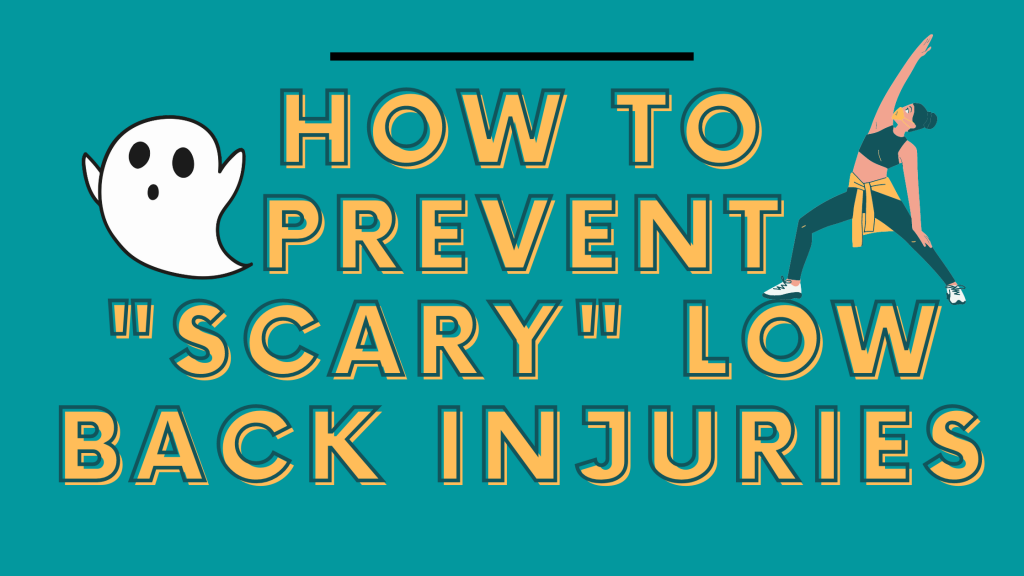
Halloween is fast approaching, and it is time to think about costumes! But before you throw a spooky yet crazy Trick-or-Treat party, ensure your back is at its best. It’s a nightmare scenario for most of us: you’re enjoying the Halloween festivities, you go to the bathroom and— bang your “back goes out!” Don’t let it happen to you. Freak not because we’ve got some tricks to keep lower back injuries at bay. These stretches will prepare your spine for any “gruesome” surprises! 1. Hamstrings Do you feel any tightness in the back of your legs? Many people do since hamstrings are a group of muscles near the back of the thighs. Tightness in this area can pull your pelvis forward, causing your lower back to sway as you move. And when that happens, you’re at risk for low back pain and injury. So to protect yourself, stretch those muscles regularly! Sit on a chair and put your leg straight out on another chair right in front of your body. Slowly reach your toes. Repeat with the opposite foot. 2. Quads When it comes to the lower back, tight quad muscles are like a ticking time bomb. If not stretched regularly, these strong muscles can cause a chain reaction that leads to pain and injury. To do a standing quad stretch, simply stand up straight with your feet together. Slowly bend your right leg to the knee. Hold the right foot through your right hand and pull it carefully toward your glutes. Hold for 20 to 30 seconds. Repeat it on the opposite leg. 3. Hip Flexor Located at the front of hips, hip flexor muscles are an important part of your leg swing. If they’re too tight, the lower back may not be able to flex and lengthen properly. The good news is that by stretching these muscles regularly, you’ll be able to take care of this common problem and eliminate any related risks. To do it, slowly push your hips forward until your back leg and hip until you feel the stretch on your upper thigh. Hold that position within 15 to 30 seconds. Then do it again 2-3 times. Keep this in mind when doing these stretches: * Don’t force your body into a stretch. The goal is to prepare your spine, not overstretch. * Breathe while you stretch—this is important so your muscles can relax. * Do not bounce while you stretch. This can cause injury. Stretch slowly and smoothly and hold each position for 20-30 seconds. * Always listen to your body! If you feel pain, stop stretching right away! You may be doing it too hard or not properly! Stay safe while having fun!
Steps on Prepping for Football
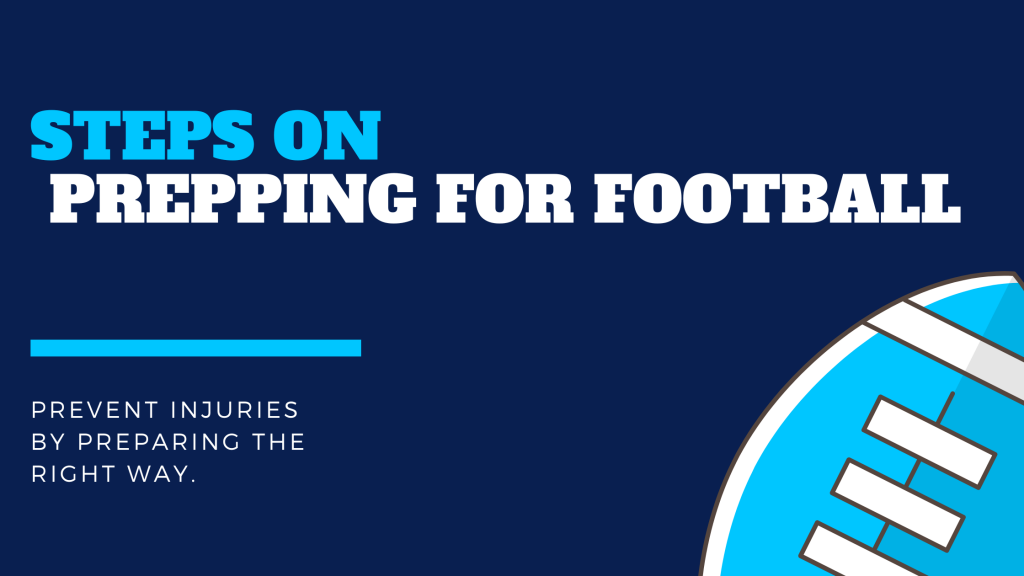
Don’t go all out for the big game without some preparation! Here’s a few exercises to get you ready for kickoff. They will help you get your heart pumping and keep your muscles loose so you can last the entire game without tiring out! Don’t go all out for the big game without some preparation! Football is a physically demanding sport that requires a high level of fitness and conditioning. To perform at your best on game day, it’s important to properly prepare your body through a combination of cardio, strength, and flexibility training. The following exercises are designed to help you improve your cardiovascular fitness, build muscle strength and power, and increase your flexibility, all of which are essential for success on the field. Importance Of Fitness & Exercise For Football Players Cardiovascular fitness is important for football players because it helps to increase endurance, allowing you to perform at a high level for longer periods of time. Some great exercises to improve cardiovascular fitness include running, cycling, and swimming. Incorporating interval training, such as sprints, into your cardio routine can also help to improve your overall fitness. Strength and power are crucial for football players, as they allow you to perform at a high level and make powerful plays on the field. Exercises such as squats, deadlifts, and bench presses are great for building overall strength and power. Incorporating plyometric exercises, such as jumping and bounding, into your routine can also help to improve power and explosiveness. Flexibility is also important for football players, as it helps to prevent injuries and improve overall performance. Yoga, stretching, and foam rolling are all great ways to increase flexibility. Relaxation is also important to remember to give your body time to recover after intense workouts. Make sure to schedule rest days and actively work to prevent injury by stretching before and after exercise and warming up before games. By incorporating these exercises into your regular training routine, you will be better prepared for the big game and less likely to get injured. It’s also important to consult with a coach or trainer to build an individualized workout plan that fits your specific needs and goals. how to prevent injuries in prepping? Here are a few exercises to get you ready for kickoff. They will help you get your heart pumping and keep your muscles loose so you can last the entire game without tiring out & injuries! Leave a Reply Your email address will not be published. Required fields are marked * Comment * Name * Email * Website Useful Links Anti-Discrimination Disclaimer Healthcare Disclaimer Good Faith Estimate Privacy Policy Ridgefield Chiropractic & Wellness Center Monday – Wednesday: 9:00 am – 7:00 pm Thursday: CLOSED Friday: 9:00 am – 7:00 pm Saturday: 9:00 am – 12:00 pm (1st and 3rd Sat of the month) Sunday: CLOSED Connect With Us Facebook Instagram Youtube Twitter Linkedin Site Map (C) Copyright 2022 . All rights reserved. Ridgefield Chiropractic.com
Is It Important To Strengthening Your Neck for Football
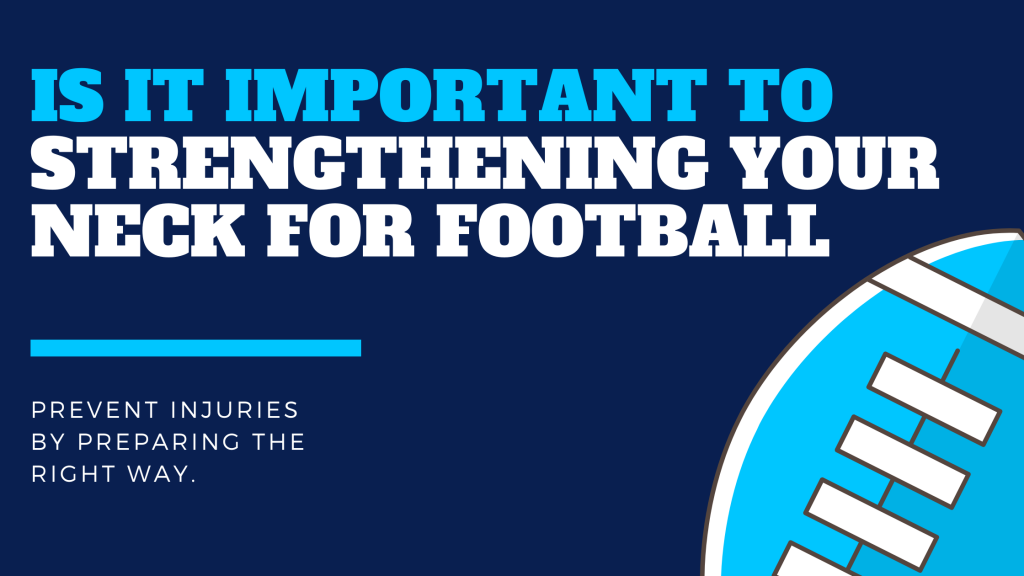
Whether it’s the first ever game of your young athlete’s career or the last game of the season, it’s more than essential to ensure they’re ready for action. An athlete’s neck, which is an important yet most ignored body part, should be strengthened before participation in football and even in soccer to avoid potential injuries Research has shown that strengthening the neck can: – Prevent injuries that may occur during contact sports such as football – Results in an overall increase in speed, agility and strength – Improve balance, one of the key components of being a successful football player Through some research we’ve found here are a few neck strengthening exercises that will benefit the student athlete: 1. Cervical Slides Football requires a lot of bending and twisting of the neck especially during tackling. You can help your child achieve a better posture and a firmer neck with cervical slides. How to do it? Stand with your feet shoulder-width apart. Now, bend your neck and slowly move your chin downward until you feel the stretch on the back of your neck. Next, tuck your chin to your chest and slowly move your head back up. Repeat this in one minute. Reminder: Always keep your chin tucked in to avoid straining your neck. For better execution, watch this video tutorial: https://www.nfl.com/news/get-ahead-of-the-game-with-these-neck-exercises-0ap3000000602977 2. Dumbbell Front Raises If you want to enhance shoulder mobility and tone your upper body to take on the forces during tackling or being tackled, dumbbell front raises are your go-to exercise. It also helps strengthen your upper back and the muscles of your neck. How to do it? Stand straight with your feet shoulder-width apart. Swing your arms back and touch the dumbbells to your upper chest. Slowly lower them back to the starting position. Repeat for 10 to 20 reps. Pro tip: Avoid swinging the dumbbells too fast. This can put a lot of pressure on your neck. Learn how to do it properly here: https://www.youtube.com/watch?v=yXSoDQ7SgTk 3. Dumbbell Shrugs Usually, this exercise is done with a barbell, but you can also do it with dumbbells. By practicing shrugs, you’re developing your upper body’s muscles and strengthening your neck. This can even help improve power in the shoulder and elbow joints. In addition, it will allow you to hold your head high, protecting your neck from unnecessary stresses caused by a forward posture. How to do it? Stand with your feet slightly apart, knees slightly bent and dumbbells raised above your head. Shrug your shoulders up and down while keeping your arms straight. Repeat for 10-20 reps. Note: Make sure you don’t raise your shoulders higher than your ears. Go only as high as your shoulder joints allow. This video tutorial will teach you how to do the shrug properly: https://www.youtube.com/watch?v=llSrlpd7TEE Better Safe than Sorry Injuries can happen anytime, so it’s essential to better understand the potential risks that can be caused by injuries and how much time you should dedicate to preventing them from happening. If you want your child to stay healthy and avoid injuries, take these exercises seriously to help strengthen their neck so they can play at their optimal capacity. Need help in prepping your young football superstar before the game? Let us handle that for you. From the pre-game warmup to the post-game cooldown, we’ll ensure that your child is ready to take action when the whistle blows. So contact us today, and let us get you started!
Understanding Carpal Tunnel Syndrome

Do you know that putting strain on your hand or wrist which causes that feeling of numbness or tingling may lead to something serious? The first clinical practice about this hand nerve weakness diagnosis was in 1854 when most patients presented themselves with motor and sensory complaints in the median nerve distribution of their hands. Then, in 1938, ‘Carpal Tunnel Syndrome (CTS)’ was the term coined by Moersch. Today, the prevalence of CTS in general population reports ranges from 1% to 10%. What is ‘Carpal Tunnel Syndrome or CTS’ Carpal Tunnel Syndrome (CTS), also known as median nerve compression, is a condition that causes numbness, tingling, and weakness in your hand. Ctto:https://pin.it/1eW5Cub It happens when a person puts pressure on his median nerve, which runs the length of the arm and then goes through a passage in the wrist called the carpal tunnel, and ends in the hand. Because the median controls the movement and feeling of his thumb and fingers except not typically the pinky finger. The most common causes of CTS are the burning sensation, tingling, or itching numbness in your hand, weakening feeling when you hold objects, the shock-like sense that moves into your fingers, or that tingling discomfort that moves up to your arm. One example is when you wake up in the morning and suddenly you feel that numbness and tingling on your shoulder down to your hand. During the day, these symptoms might flare up and distract you from doing your usual activities and routine. In the early times, shaking your hands may ease that sensation, but in some cases, the numbness may not subside or go away. CTS Risk Factors, Treatment, and Prevention According to studies, CTS is mostly seen in women. As women have smaller carpal tunnels than men, so they are three times more likely to get it. Also, there are much higher risks for a family member with carpal tunnels, the nature of your job, and often if you experience a fracture or dislocated wrist. Some diagnoses and test procedures are available like tapping the palm side of your wrist called the Tinel Sign test, or fully flexing the wrist with your arms extended. For doctors to examine your bones and tissues more, imaging tests such as X-rays, ultrasounds, and MRI exams are applicable. Also, electromyogram or nerve conduction studies are the next steps to further examine this condition. CTS treatment will depend on your symptoms, condition, and progress. With that, you might need to change your lifestyle, exercise more often, immobilization, anti-inflammatory drugs or steroid medication, or have surgery. Other than that, you may start to keep your wrists straight at all times, use a splint or brace, keep your hands warm, put your hands or wrist in proper position while you work, and take breaks whenever possible. Ctto: https://pin.it/65IaNbL Therefore, the early treatments for Carpal Tunnel Syndrome are highly recommended with physical therapy, and a change of lifestyle can help to significant long-term improvement and eliminate its symptoms. While untreated CTS can lead to permanent nerve damage, disability, and loss of hand function. We are here for you if you need help with CTS – we are just a phone call away.
7 Methods To Cure A Sinus Headache At Home
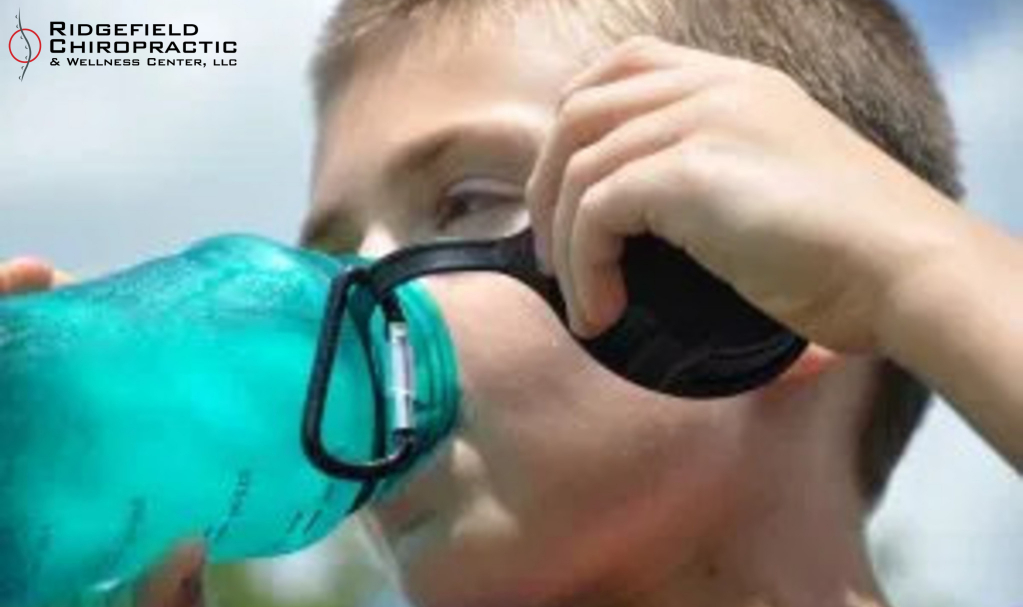
It starts with pressure. You feel it in your face. You feel it behind your eyes. You can’t breathe. Your upper teeth hurt. Your ears feel full. Then, the throbbing in your head begins. Oh, the throbbing! You already know what it is…another sinus headache. So, you go to your doctor who gives you a prescription for another antibiotic that never seems to help. Pain medications and decongestants rarely give you any relief. You find yourself frustrated and miserable. What is one to do when nothing works to ease the pain and pressure? In order to understand why conventional treatments do not seem to help your sinus headache, you must first understand why these headaches are occurring and what exactly is a sinus headache. A sinus headache is a type of headache that comes on when the sinus cavities located in your forehead and face become inflamed. Sinus cavities are basically air pockets in the bone of your skull that allow for the air you breathe in to be filtered and humidified, and the mucus your body produces to drain. When the mucus that typically drains from these cavities is prohibited from doing so, congestion can occur, which will increase the pressure in the sinus cavities, thereby producing one terrible headache. When you lean forward or lay down, the mucus that is trapped in your sinuses moves around the cavity, causing the pain and pressure in your face and head to increase. Hence, the throbbing you feel. There are four different pairs of sinuses in your face. The frontal sinuses are located in your forehead, the sphenoid sinuses are in the bones behind your nose, the ethmoid sinuses are located between your eyes, and the largest pair of sinuses are located in your cheekbones and are called the maxillary sinuses. If the locations in your face and head that were just described are where you feel a great deal of pressure or pain, then you may be the victim of a sinus headache. So, why don’t antibiotics and decongestants your doctor prescribes cure your sinus headache? In order for antibiotics to be effective against an infection of any type, including a sinus infection, the cause of the infection must be bacterial in nature. Bacterial infections only make up about 5% of the infections located in your sinuses! Unfortunately, the other 95% of sinus infections are either viral or fungal, and antibiotics have no effect on killing either. Decongestants will help with the swelling of the nasal passages, thus making it easier to breathe. But, they are not a cure for sinusitis (infection of the sinuses) or allergies. Therefore, when you take a decongestant, you may feel relief for a short time, but once the effects of the drug wear off and the symptoms return, you need to take the medication again. This is a vicious cycle that really gets you nowhere when it comes to eliminating a sinus headache. So, now that you know where and what your sinuses are, what a sinus headache actually is, and why conventional methods do not work, what can you do to ease the pressure and pain when the conventional methods of treatment fail? The good news is that there are many ways to treat a sinus headache naturally from your own home! The seven following treatments are easy things you can do to stop the pain from a sinus headache: Method 1: Keep Your Body Hydrated! If you are prone to sinus headaches, here’s yet another reason to drink up the water! Water helps to thin out congested mucus. The thinner the mucus, the easier it is to drain. It really is that simple. A good rule to follow is to drink half your weight in ounces a day. For example, if you weigh 150 lbs, you should be drinking at least 75 ounces of water per day! Not only is it important to drink water, but it is equally important to avoid drinks that will dehydrate you rapidly. Alcoholic drinks, soda, and even tea will decrease your hydration level quickly. For every drink you have that depletes your hydration, you need to replace that much in water, plus your daily required water intake. So, if you have a 20-ounce soda and weigh 150 lbs, you need to drink 95 ounces of water to keep your hydration at its best! Method 2: Steam Your Sinus Headache Away with Cinnamon! Cinnamon is an herb that works as an anti-inflammatory to help with nasal passages and sinus cavities that have become swollen. Cinnamon also works as a strong antiseptic to combat bacteria and viruses. Boil two cinnamon sticks in water, then let them simmer for 10 minutes. Remove from heat, and place a towel over your head and the pot to trap the steam. Breathe in the steam. Your nasal passages will open and congestion will lessen. The pressure from your sinus headache will lessen within minutes. Do this once a day until your sinus issues are gone. Method 3: Get Rid of the Dry Air! In order for the mucus to drain properly from your sinuses, the air cannot be too dry. Dry air irritates the sinus passages and causes congestion in the sinuses to build due to inflammation and slow drainage. Putting moisture back in the air with a humidifier is a great way to eliminate sinus headaches that are enhanced from dry air. Keeping your home environment properly humidified prevents irritation of the nasal passages and allows for drainage of mucus to happen. Therefore, you keep the pressure from sinus headaches away. Method 4: Drink Apple Cider Vinegar! Apple cider vinegar is a common household item. Its usages range from a strong cleaning agent to countless health benefits. Apple cider vinegar can also be used to combat an oncoming sinus headache! Antioxidants, vitamins, and minerals are all contained in organic, unprocessed apple cider vinegar, and it acts as a strong body detoxifier. It is thought that apple cider vinegar acts to
How Your Chiropractor Can Treat and Prevent Sinus Infections
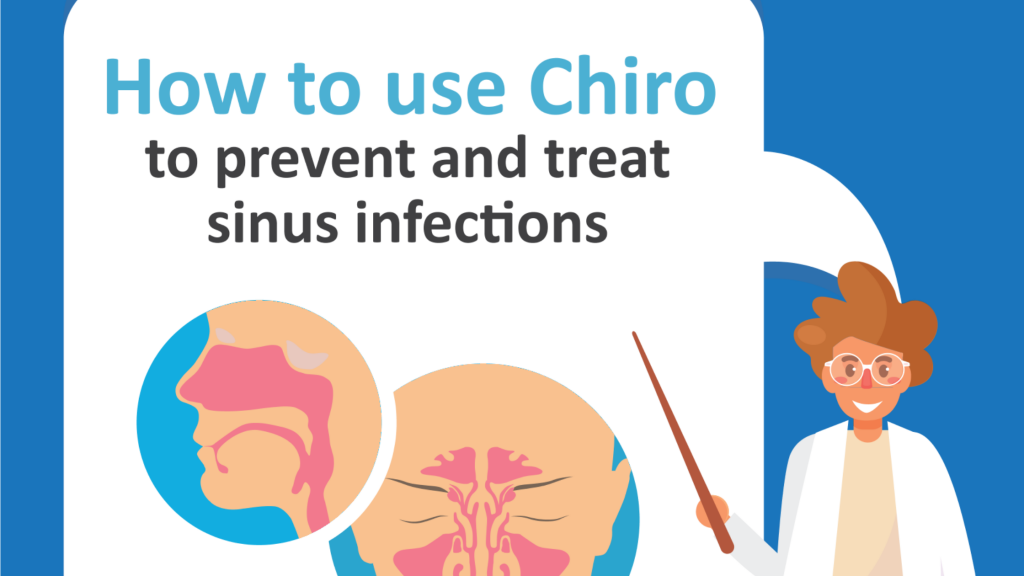
No one likes the constant headache, runny nose, and general misery that sinus infections bring. Chronic sinus issues can lead to other health issues and the need for multiple rounds of antibiotics, taking antibiotics over and over can reduce their effectiveness. Thankfully, there are a lot of ways you can help prevent and treat sinus and allergy issues naturally with the help of your Chiropractor! Check out the 6 ways your Chiropractor can help you feel your best! Let us help you with your sinus and allergy issues, contact our office below to get rid of your sinus issues. It’s sinus and allergy season, you do not have to suffer! Call our office today for an appointment and we will help you fight off the sinus and allergy blues!
